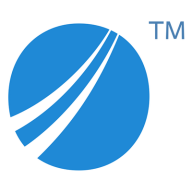

Find out in this report how the two Cloud Data Integration solutions compare in terms of features, pricing, service and support, easy of deployment, and ROI.
We have not purchased any licensed products, and our use of Elastic Search is purely open-source, contributing positively to our ROI.
TIBCO's support, especially for integration products, is swift.
I can actually add more storage and memory because I host it in the cloud.
There are no significant stability issues as long as the product's capabilities are understood and not overly pushed.
This can create problems for new developers because they have to quickly switch to another version.
TIBCO Spotfire and ClickView need improvement in scheduling, which is critical yet lacking in quality.
TIBCO Spotfire's pricing is high, particularly in traditional markets like Turkey, impacting market penetration.
Elastic Search makes handling large data volumes efficient and supports complex search operations.
Aggregation is faster than querying directly from a database, like Postgres or Vertica.
TIBCO Spotfire integrates with R and Python, offering a differentiator from the competition.


Elasticsearch is a prominent open-source search and analytics engine known for its scalability, reliability, and straightforward management. It's a favored choice among enterprises for real-time data search, analysis, and visualization. Open-source Elasticsearch is free, offering a comprehensive feature set and scalability. It allows full control over deployments but requires managing and maintaining the infrastructure. On the other hand, Elastic Cloud provides a managed service with features like automated provisioning, high availability, security, and global reach.
Elasticsearch excels in handling time-sensitive data and complex search requirements across large datasets. Its scalability allows it to handle growing data volumes efficiently, maintaining high performance and fast response times. Integrated with Kibana, Elasticsearch enables powerful data visualization, providing real-time insights crucial for data-driven decision-making.
Elastic Cloud reduces operational overhead and improves scalability and performance, though it comes with associated costs. It is available on your preferred cloud provider — AWS, Azure, or Google Cloud. Customers who want to manage the software themselves, whether on public, private, or hybrid cloud, can download the Elastic Stack.
At its core, Elasticsearch is renowned for its full-text search capabilities, capable of performing complex queries and supporting features like fuzzy matching and auto-complete.
Peer reviews from various professionals highlight its strengths and weaknesses. Pros include its detection and correlation features, flexibility, cloud-readiness, extensibility, and efficient search capabilities. However, users have noted challenges like steep learning curves, data analysis limitations, and integration complexities. The platform is generally viewed as stable and scalable, with varying degrees of satisfaction regarding its usability and feature set.
In summary, Elasticsearch stands out for its high-speed search, scalability, and versatile analytics, making it a go-to solution for organizations managing large datasets. Its adaptability to different enterprise needs, robust community support, and continuous development keep it at the forefront of enterprise search and analytics solutions. However, potential users should be aware of its learning curve and the need for skilled personnel for optimization.
TIBCO Spotfire is a versatile data analytics platform that can handle large datasets and be deployed on-premise or in the cloud. Its dynamic reporting, easy creation of dynamic dashboards, and highly customizable tool make it a valuable asset for process data analysis, industrial performance dashboards, problem root cause analysis, business intelligence, and real-time analytics for IoT devices in the energy sector.
The solution also offers data science functions, map visuals, R and Python integration, and the ability to write HTML and JavaScript text areas. Spotfire has helped organizations deliver projects more efficiently and cost-effectively, allowing for faster data analysis.
We monitor all Cloud Data Integration reviews to prevent fraudulent reviews and keep review quality high. We do not post reviews by company employees or direct competitors. We validate each review for authenticity via cross-reference with LinkedIn, and personal follow-up with the reviewer when necessary.